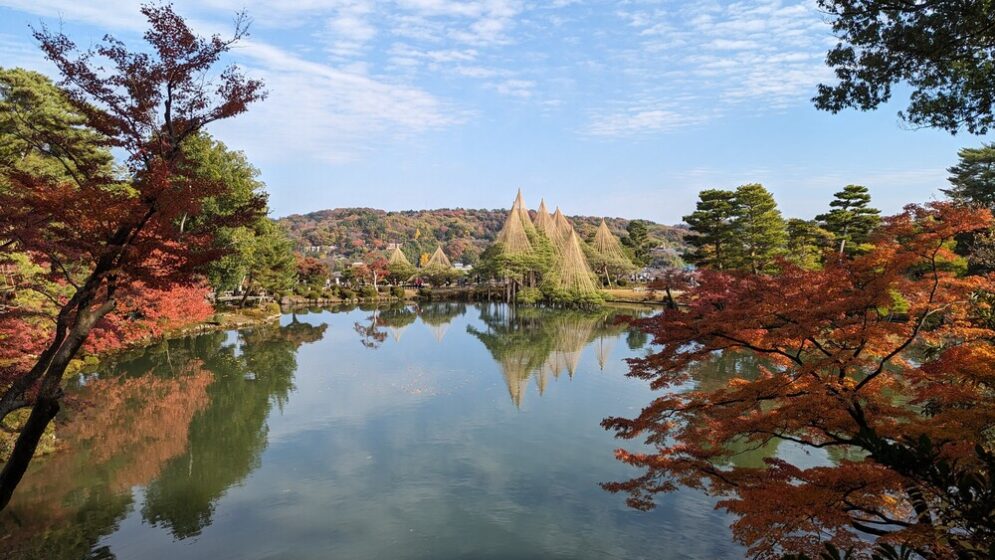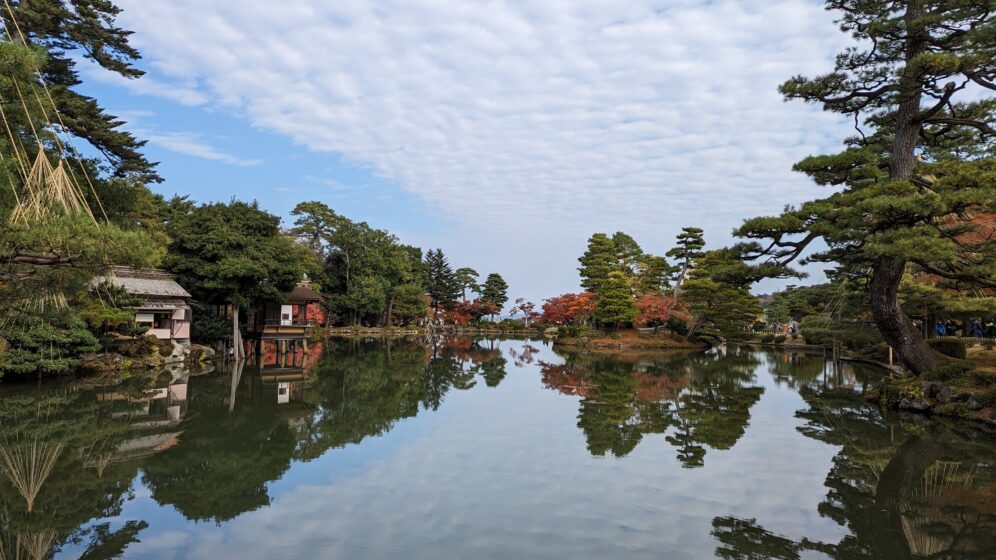
1. Things You Should Know About Kenrokuen Garden
Kenrokuen (兼六園) is a strolling style garden constructed during the Edo period by the Maeda clan. The name literally means “Garden of the Six Attributes”, referring to spaciousness, seclusion, artificiality, antiquity, abundant water, and broad views. These six essential attributes make up a perfect garden according to Chinese landscape theory.
The garden is famous for its beauty across all seasons, particularly in winter. It features meandering paths, a large pond, several tea houses, and one of Japan’s oldest fountains though, you should not forget visiting mindfully colourd season as well. The garden covers over 25 acres and was developed from the 1620s to the 1840s by the Maeda clan. It was first opened to the public in 1871.
Kenrokuen is one of the Three Great Gardens of Japan, along with Kairakuen and Korakuen. It was designated a National Site of Scenic Beauty in 1922, and subsequently received status as a National Site of Special Scenic Beauty in 1985. The grounds are open through paid admission year-round during daylight hours.
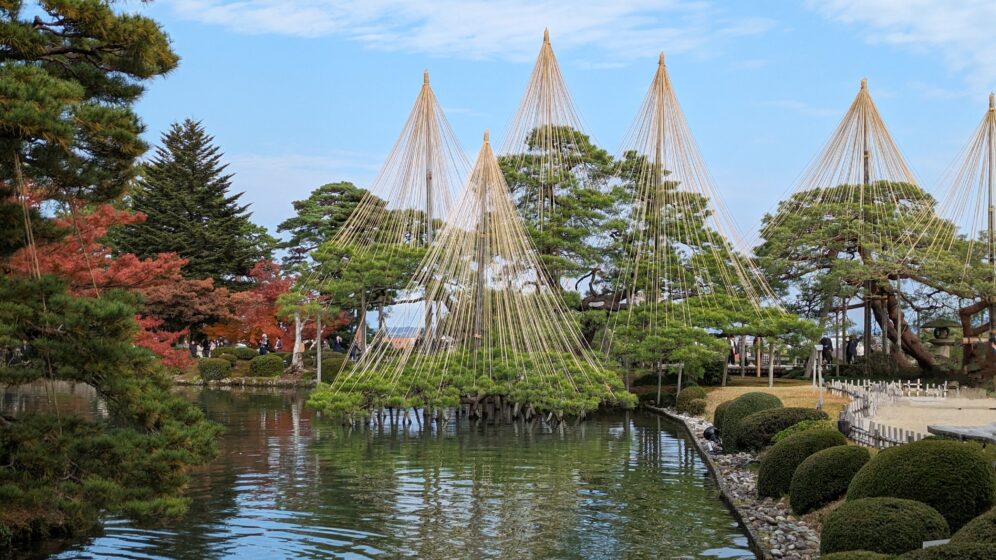
2. How Come The Umbrellas Emerge
Upcoming the season of snow, you can see these typical umbrellas all round the garden. Those are called “Yukitsuri“, which a traditional Japanese technique, are to protect trees and shrubs from the heavy snow.
“Yukituri” is done by providing extra support to the trees by attaching ropes to their limbs using bamboo poles. It is particularly important in the regions by the Sea of Japan, where renowned the heavy snowfall due to its high moisture content.
“Yukitsuri” can be seen in some places of the Hokuriku area though, the ones installed in Kenrokuen are famous and have become a seasonal tradition that signifies the beginning of winter in the region. That consists of about 54 locations of “Ringo-Tsuri“, 60 locations of “Miki-tsuri” and others. The scenery is delighting the eyes of visitors every year.
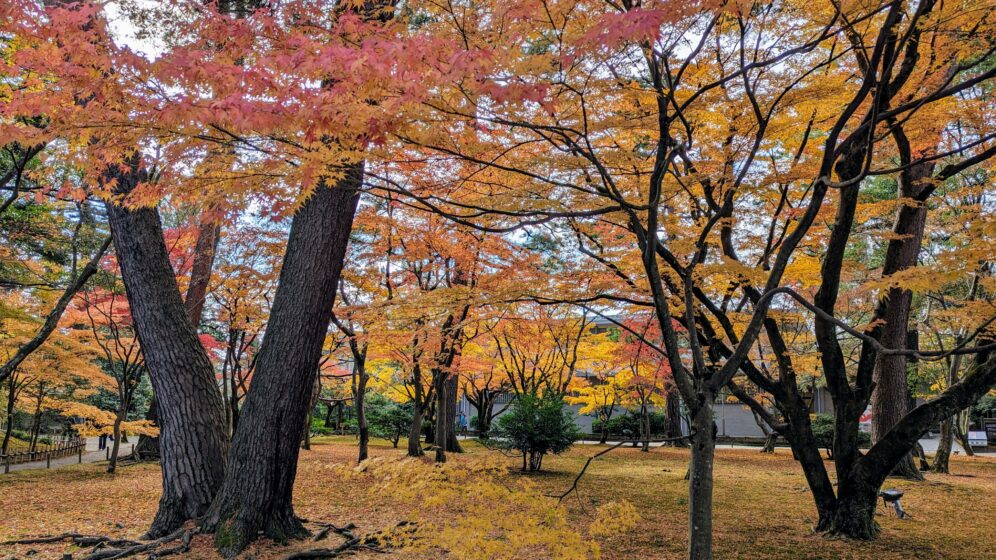
3. Make Your Mind Coloured
The garden transforms into a vibrant canvas of red, orange, and yellow hues, with the leaves of the many trees changing their colour. This spectacle of autumn leaves is a sight to behold and one of the most beautiful scenes in Japan.
As you walk through the garden during this season, you can’t help but feel a sense of awe at the stunning display of colours. The reflection of the fiery leaves on the surface of the large pond adds to the mesmerisng view. The sight of the Karasaki Pine, one of the garden’s most famous trees, against the backdrop of the autumn sky is truly unforgettable.
Visiting Kenrokuen during the autumn season is an experience that leaves a lasting impression. The combination of natural beauty, historical significance, and cultural practices makes it a place worth visiting.
Whether you’re a nature lover, a history enthusiast, or someone seeking tranquility, Kenrokuen has something to offer. The memory of strolling through the garden, basking in the beauty of the autumn leaves, are kind of precious time. It’s no wonder that here is one of the Three Great Gardens of Japan.
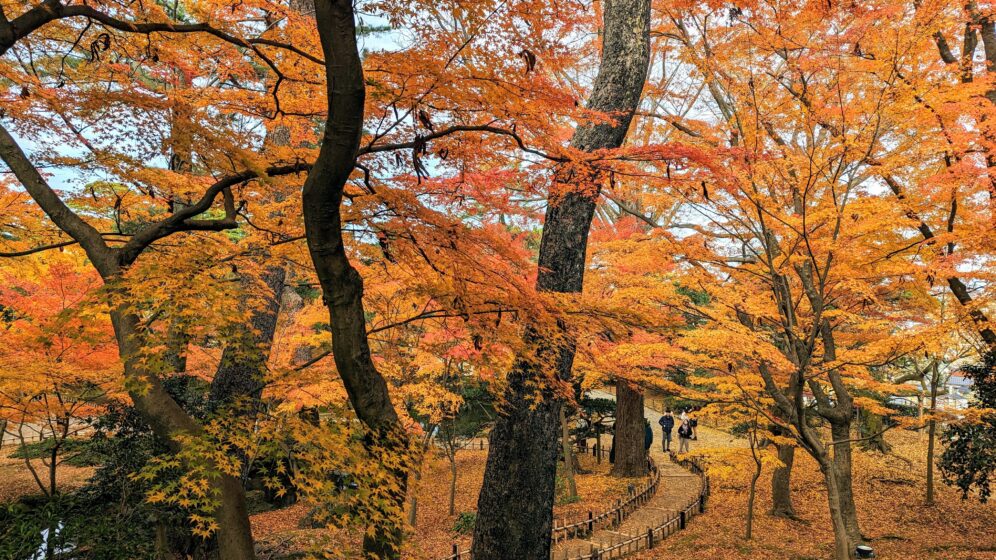
4. How To Get There
Kenrokuen garden is located next to Kanazawa Castle ruins. You can reach the garden by taking a Hokutetsu Bus from Kanazawa Station (East Exit) to Kanazawa Castle Park and Kenrokuen garden bus stop. The bus ride takes about ten to fifteen minutes and costs 210 yen. Also, it takes 15minutes walk from Korinbo area which is the city centre of Kanazawa.
| INFOMATION | |
|---|---|
| Address | 1 Kenrokumachi, Kanazawa-shi, Ishikawa How to get there? |
| Opening Hours | 7:00–18:00 (8:00–17:00 from October 16th to end of February.) Early admission From 5:00 (April to August from 4:00, November to February from 6:00) ※Early admission visitors must exit the garden before the start of regular hours |
| Closed | No closing days |
| Admission | Adult: 320 yen Children (6 to 17 years old): 100 yen Persons aged 65 years old or over: Free (ID required) Early admission visitors: Free |
| Parking | Available |
| Transportations | 5 minutes walk from Kanazawa Castle Park and Kenrokuen Garden bus stop (Hokutetsu Buses) All buses available from platform 6, 7 and 8 of Kanazawa Station bus terminal |
| Official Website | https://www.pref.ishikawa.jp/siro-niwa/kenrokuen/e/index.html |
| Recommend References | VISIT KANAZAWA Website |
